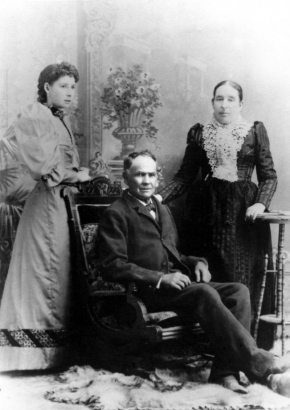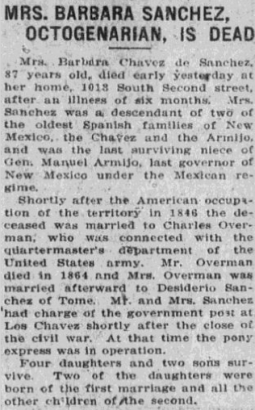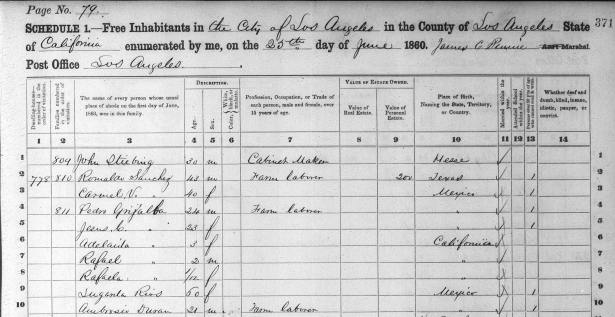Maiden Names (Usually) Do Not Change
A cultural difference that makes Hispanic naming conventions unique is that women usually do not take on their husband’s surname. While there are some exceptions, most women use their maiden names for their entire lives. For women who do adopt their husband’s surname, some add “de” between names or use “viuda,” which is Spanish for widow, after he has died.
When researching women, the use of maiden names can make it easier to find them on census records, church records, and legal documents in Spanish-speaking countries. However, when women move to or live in English-speaking countries, whether or not they keep their maiden name is fluid. Sometimes the decision isn’t theirs, such as when census takers automatically used the husband’s surname for family listings in census records, without regard to traditional naming customs. Genealogists and researchers should take note of these practices.
Consider the difference in researching families who share common first and last names, for example John Smith and Mary Smith in 1930 U.S. census records and Juan García and María Montoya in 1930 Mexico census records. If the couples had no children, it may be hard to distinguish between multiple couples named John and Mary Smith living in the same area, while María Montoya keeping her maiden name helps distinguish her from other women named María married to men named Juan García.
There are exceptions, of course, and women change their names for different reasons. For example, Cristina Fernández de Kirchner, a former first lady and president of Argentina, has added her late husband Néstor Kirchner’s surname to her own. For those women who chose to use their husband’s surname after he has died, they may be addressed as viuda instead of señora. For example, Sra. Bárbara Chávez de Sánchez would be addressed as Vda. Bárbara Chávez de Sánchez or Vda. Bárbara Sánchez.
This series is designed to help customers deepen their research skills while learning about Hispanic cultural traditions and customs they may encounter in family history and genealogy records.
Parts 1 and 2 of this series were published as part of the Western History and Genealogy Newsletter. You can sign up for the monthly newsletter in the box to the right.





Add new comment